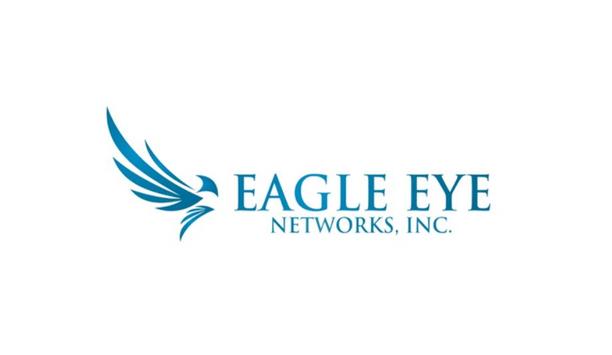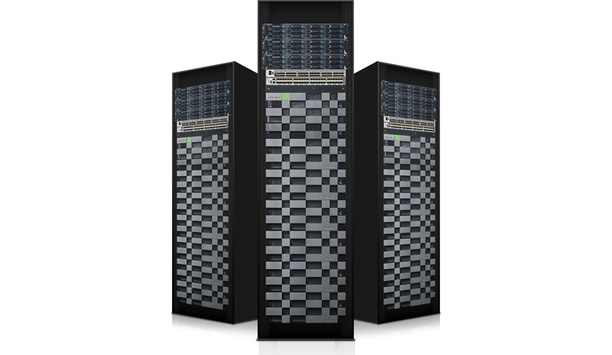IHS Inc - Experts & Thought Leaders
Latest IHS Inc news & announcements
ONVIF®, the global standardisation initiative for IP-based physical security products, is pleased to return to ISC West 2024, April 9-12 in Las Vegas, at Booth L0 to continue the industry-wide conversation about open standards, interoperability, and the freedom of choice that standards provide for end users, systems integrators and consultants. This freedom of choice is important in several technology segments that will be major themes of this year’s ISC West event, including Artificial Intelligence, video analytics, and the industry’s transition to the cloud. Cloud and cloud services This transition is the central theme of a panel discussion, “Defining the Cloud: Are Standards the Answer?” to be held at 10 am on Tuesday, April 9 in Venetian 308 at the Venetian Expo as part of the SIA Education at ISC conference programme. ONVIF Chairman Leo Levit will participate in the panel as it explores cloud topics ONVIF Chairman Leo Levit will participate in the panel as it explores cloud topics, such as clarifying the definitions of cloud and cloud services, the benefits and drawbacks of cloud adoption, and the differences between proprietary and open standards-based approaches to cloud. Other expert panelists include Joshua Anderson, Director of Surveillance and Technology, Cherokee Nation Entertainment; Mike Dunn, Strategic Innovation and Business Development, Wachter; Josh Woodhouse, lead analyst and founder of Novaira Insights and Brian Karas, President of Pelican Zero. Engaging with new technologies and approaches “While our industry navigates these significant technological shifts, the platforms for discussion, debate, and conversation offered by events such as ISC West are invaluable to all who attend,” said Levit. “As the de facto standards provider of standards for the physical security industry, ONVIF will continue to be deeply engaged in developing specifications and profiles that provide the market with interoperable products that support the transition to these new technologies and approaches.” ONVIF profiles New TLS Configuration Add-on for secure communication, the first to be released under the add-on concept At ONVIF booth L0, visitors will get a chance to test their knowledge of ONVIF profiles, membership information, and other fun facts about ONVIF in an interactive trivia game, with chances to win an iPad or other prizes. On display at the booth will be information about the various ONVIF profiles and the new TLS Configuration Add-on for secure communication, the first to be released under the add-on concept. IP-based physical security products Founded in 2008, ONVIF is a leading and well-recognised industry forum driving interoperability for IP-based physical security products. The organisation has a global member base of established camera, video management systems, and access control companies and more than 28,000 profile conformant products. ONVIF offers Profile S for streaming video; Profile G for video recording and storage; Profile C for physical access control; Profile A for broader access control configuration; Profile T for advanced video streaming; Profile M for metadata and events for analytics applications and Profile D for access control peripherals. ONVIF continues to work with its members to expand the number of IP interoperability solutions ONVIF conformant products can provide.
Eagle Eye Networks, the global pioneer in cloud video surveillance and artificial intelligence, will demo its newly launched Eagle Eye LPR (license plate recognition) and preview its upcoming Eagle Eye Smart Video Search at ISC West taking place at the Venetian Expo March 23-25. Eagle Eye Smart Video Search is the first-of-its-kind deployment of smart search across a global enterprise without the need for local hardware changes or local labour. Cloud video surveillance platform Current and prospective partners and customers are invited to stop by Booth 25051 or book a meeting in advance. The Eagle Eye Networks team will be on hand to show its new AI + Cloud offerings and discuss how a true cloud video surveillance platform can address customers’ security needs while delivering cybersecurity assurance, business intelligence, and the flexibility to change and scale systems to ensure investments are future-proof. Demonstrations and education session details Stop by Booth 25051 for demonstrations of: Eagle Eye LPR (license plate recognition), uses the AI + Cloud for very high accuracy in challenging conditions and it operates on any security camera. Eagle Eye Smart Video Search, allows users to search for people, vehicles, or objects and immediately find the exact video across all cameras in all sites saving time and money. All customers will get this AI capability without any change to their installations at no extra subscription cost in the Eagle Eye Cloud VMS (video management system). Join for an education session: “Cloud Video Surveillance Makes Cities Smarter” Discuss the Mexico City Smart City project with integrator Jaime Abad Valdenebro of Omnicloud, security consultant Ray Bernard of RBCS, and technology provider Ken Francis of Eagle Eye Networks. It's a multi-year smart city project–58,000 fixed cameras and 16,000 cameras in public transport, and body cameras as well. Thursday, March 24, 1 p.m. Venetian 304, Level 1. Cloud video subscription-based services It can offer flexible pay-as-you-grow scalability such as adding new cameras or locations or trying out new AI features" Business leaders’ interest in cloud video surveillance and subscription-based services is on the rise. According to a January 2022 Novaira Insights survey, 68.3% of respondents in the US and Canada thought their organisation will move to managing or storing more of its video surveillance data in the cloud in the next two years. “The combination of true cloud-based video surveillance systems and a subscription-based business model can offer advantages for end-users and systems integrators,” said Josh Woodhouse, report author and founder of Novaira Insights. “It can offer a flexible pay-as-you-grow scalability such as adding new cameras or locations or to try out new artificial intelligence (AI) features–with low friction configuration and only short-term commitments.” Technology-based RMR Chris Gilbert, president of Indiana security integration firm Security Pros, said the "Eagle Eye Networks team has been great to work with, helping us adapt our business to focus on recurring monthly revenue (RMR) creation through technology.” “ISC West is a great place to see how our industry is changing, see new technology demos in person, and make connections with partners, like Eagle Eye Networks, that keep their finger on the pulse of the industry." Eagle Eye Smart Video Search will be globally available in Summer, 2022.
Dahua Technology, a globally renowned video-centric smart IoT solution and service provider, takes a step forward with its self-developed and patented HDCVI technology. A longtime provider of the realm of HDCVI that offers great convenience, best quality and least cost, Dahua Technology launches HDCVI 6.0, boasting one of industry's first 4K real-time and advanced AI capabilities. According to IHS report, a 4K security camera is a security camera that is capable of outputting 3840*2160 with a frame rate of at least 24 FPS. A couple of years ago, the industry went through technical challenges when moving from standard definition to high definition video, since then the demand for HD resolution cameras grew rapidly. It is expected that 4K video surveillance cameras to follow a similar pattern. The HDCVI 6.0 era In 2012, Dahua Technology introduced the industry renowned HDCVI Technology, and since then it continues to enhance the technology leadership by bringing state-of-the-art performance in terms of resolution, intelligence and usability to the HDCVI community. In 2020, Dahua Technology takes HDCVI to the 6.0 era. HDCVI technology architecture overcame the common bottleneck of transmission bandwidth to achieve ultra-high resolution of 4K@25/30fps video previously only available on IPC. This is a major breakthrough to extend the potential of HDCVI in future This is a major breakthrough to extend the potential of HDCVI in future. The newly released 1800 series products support 4K real-time Ultra HD image acquisition and back-end XVR storage, providing a superior visual experience in which tiny details are captured in better clarity within a large monitoring coverage. Its competitive pricing promotes the global inclusivity of 4K technology. Access control systems In addition, 1800 series camera is optional with built-in mic, which allows audio-over coax transmission with a broadcast-quality audio. With outstanding compatibility, this series also support self-adaptive output, enabling the 1800 series to work with 4K real-time XVRs to achieve 30fps output, and also any 4K XVR to achieve 15fps output, to protect the existing investment. To accelerate the AI adoption, the new 4K real-time XVR are equipped with Enhanced AI, a number of deep-learning powered functionalities such as SMD Plus, Perimeter Protection, Face Recognition and Metadata Search, that focus on human and vehicle, providing intelligence, simplicity and inclusivity to users. Analogue video system HDCVI 6.0 ensures cyber security using encryption algorithms that are certified by TÜV Rheinland and UL Its benefits include: accurate prediction before an event; instant deterrence during an event; quick target search after an event; storage saving while ensuring target details, and privacy protection and defence against attacks. While offering abundant functionalities, HDCVI 6.0 also ensures high-level of cyber security using encryption algorithms that are certified by TÜV Rheinland and UL (Underwriters Laboratories). The new XVR is compatible with all existing HDCVI/TVI/AHD cameras, meanwhile, it also supports CVBS and IP cameras. All these enable a more convenient and cost-effective upgrade from existing systems. The installation, configuration, operation and maintenance of HDCVI 6.0 equipment are the same as before, preserving the plug & play convenience of analogue video system. With the upgrading of the products to 4K real-time and AI, the storage might become much more costly. Video surveillance systems To address this issue, Dahua Technology will soon release AI Coding, which takes video compression to a new level of content-awareness. It puts emphasis on human and vehicle while encoding, significantly improving the streaming quality compared with H.265. At the same time, AI Coding also reduces the bit rate when there is no real target in sight, allowing efficient handling of videos to save HDD storage cost. The comprehensive offering of HDCVI 6.0 matches up very well to the IP equivalent. Customers can choose the most suitable system for their sites without being constrained to IP only. The easy configuration and operation of HDCVI save considerable labour cost. With abundant functionalities, HDCVI 6.0 enjoys a wide range of applicable scenarios. Firstly, situations in which UHD resolution of surveillance is required, such as casinos, vaults, labs and museums. Broadcast quality audio New products will be introduced throughout the year in 2020 to implement the HDCVI 6.0 framework The high clarity of surveillance video comes from high stakes, meaning it is of utmost importance to catch every detail in real time and play back, thus to prevent unwanted behaviours and retain the unquestionable visual evidence. Secondly, places crowded with people and vehicle, such as major cross roads, entrance of campus or industry zones, shopping malls, parking lots, etc. With HDCVI 6.0, it’s much easier to find a guy or a car since AI can automatically trace features of the target in the long recording. This can be very beneficial during evidence obtaining procedure. Thirdly, places where the user wants to set their own rules and making their own block/allow list, such as a luxury store or the user’s own private house. HDCVI 6.0 will respond spontaneously according to the visual information it captured and analysed/cross-checked, to trigger the alarm for the block listed or send a tailored welcome to VIP customers. HDCVI 6.0 also allows two-way talk in broadcast quality audio. Core product launch HDCVI 6.0, a part of Dahua Technology 2020 core product launch, brings unparalleled experience with security, convenience and intelligence, protecting the investment of HDCVI customers. New products will be introduced throughout the year in 2020 to implement the HDCVI 6.0 framework. One can follow Dahua Technology on LinkedIn, Facebook and Twitter to get first-hand information on new product releases.
Insights & Opinions from thought leaders at IHS Inc
A rapid string of merger and acquisition (M&A) transactions as 2018 passed into 2019 suggests the physical security industry may be on the verge of a busy year of companies buying other companies. Observers have noted a large amount of investment capital currently available to be invested in security M&A, and plenty of entrepreneurial companies are looking to be acquired. Joe Grillo, CEO of ACRE, previously hinted at upcoming M&A activity for his company by the end of 2018, foreshadowing ACRE’s late-year announcement to acquire access control company Open Options, Addison, Texas.The VaaS cloud-based image capture platform includes fixed and mobile license plate reader cameras driven by machine learning Just days later, in the midst of the holiday season, Qognify announced its plan to acquire On-Net Surveillance Systems Inc. (OnSSI) and sister company SeeTec GmbH. Then came an even larger announcement: Motorola has acquired VaaS International Holdings Inc., a data and image analytics company for $445 million. The VaaS cloud-based image capture and analysis platform includes fixed and mobile license plate reader cameras driven by machine learning and artificial intelligence. Most recently, ADT announced yet another acquisition, Advanced Cabling Systems, a technology integration company in the South, thus continuing consolidation on the integration side of the business. There are likely to be further mergers and acquisitions in the video surveillance supply base in 2019 Continuation of the trend In the case of the Qognify and Motorola deals, Jon Cropley, Principal Analyst, Video Surveillance & Security Services, IHS Global Limited, sees them as the next chapter in an M&A trend going back several years. “I think this is a continuation of what we have been seeing in recent years of video surveillance software vendors being acquired,” he says. In the face of intense price competition, vendors have found it increasingly difficult to compete based on hardware features" “In the face of intense price competition, vendors have found it increasingly difficult to compete based on hardware features and are looking at software to offer unique competitive advantages.” In short, he sees it as a continuation of a trend that previously saw Canon acquiring Milestone Systems and Briefcam, Panasonic acquiring Video Insight and Tyco acquiring Exacq. “There are likely to be further mergers and acquisitions in the video surveillance supply base in 2019,” adds Cropley. “However, a spree of large-scale mergers and acquisitions is not expected.” Memoori, another market research firm, forecasts that the value of acquisitions could actually decline marginally in 2019 in value terms but increase in number. This observation is based on Memoori’s charting of physical security deals over the last 18 years. Jim McHale, Managing Director of Memoori, says there have been four cycles of increase and decline in activity, often exaggerated by billion dollar deals in one year such as the merger of Johnson Controls and Tyco of $165Bn in 2016. Access control when combined with identity management is punching well above its weight, and this trend has continued Access control to open systems Only time will tell whether the new year pattern of M&A activity is a coincidence or a harbinger of a busy M&A year ahead “It may be too early to make judgements on the future based on the last four weeks, but there are some interesting points that can be made when compared with our 2018 analysis,” says McHale. “Access control when combined with identity management is punching well above its weight, and this trend has continued. "Acre has been a major contributor and has completed some 10 acquisitions. In general, the access control business has been slow to move to open systems, and hopefully we can expect this trend toward openness to continue as it will give additional growth to the business.” For more commentary from Memoori, see their report “Major Trends in the Global Access Control Market 2018”. Only time will tell whether the new year pattern of M&A activity is a coincidence or a harbinger of a busy M&A year ahead. While past trends may provide a glimpse of what’s coming, there are always new variables. It’s a sure bet the overall trend toward consolidation will continue but predicting the pace and timing of individual transactions is almost impossible. In any case, it will be interesting to watch how 2019 unfolds on the M&A front, among other factors in a changing industry.
Video surveillance as a service (VSaaS) is not just for commercial organisations. Federal, state and local governments can also realise benefits from the technology—and use it to deliver an integrated video surveillance system that addresses some of their unique security needs. Video Surveillance as a Service (VSaaS) What is VSaaS? Simply stated, it’s a cloud-based video surveillance solution that is packaged and delivered as a service over the internet. The price varies depending on the features of your plan (i.e. number of cameras, amount of storage, software features, etc.), and you pay a monthly subscription price to use it. How does it work? Internet Protocol (IP) cameras are installed at site locations, and the video is captured and streamed to a service provider’s data center via an internet connection. The video management software (VMS) runs on backend infrastructure provided by the service provider’s cloud. All video processing is done in the cloud, and all that is required to view the footage is an internet-connected device and a web browser. Retail, health care, education, and transportation all benefit from the flexibility and architecture of VSaas Growing VSaaS providers Solution providers such as Axis Communications, Genetec, and G4S among many others offer VSaaS solutions, and the market is growing. According to IHS Markit, the market is expected to reach $2.3 billion in 2021. VSaaS is a solution with cross-industry appeal. Retail, health care, education, and transportation all benefit from the flexibility and architecture of the solution. But how does VSaaS address the surveillance needs of government institutions? Geographic coverage and access To protect cities and towns, law enforcement must watch over widespread geographic areas. Their work involves monitoring and policing many different neighborhoods, buildings, garages, parks, and walking paths—basically anywhere there is property or people to protect. They rely on video surveillance to help them keep these environments safe. But it’s more than local law enforcement officers who use video footage. From local city officials to federal and state law enforcement agencies, many other people, at times, need access to video footage captured by city surveillance cameras. Centralised remote monitoring How does VSaaS help? VSaaS enables the installation of cameras throughout cities and communities and stream footage to a central location via the Internet. Because the system is centralised, it eliminates the need to manage a lot of different standalone DVRs or NVRs, which enables organisations to monitor a large area from a remote command center. VSaaS enables the installation of cameras throughout cities and communities and stream footage to a central location via the Internet Plus, anyone with proper credentials can access the footage from an Internet-connected device—whether that be a smartphone, laptop, desktop, or tablet. That makes it easier for multiple agencies to work together, which in turn can improve communication and response time to incidents. Budget concerns and flexibility Tight budgets are normal in government. As a result, it’s often a challenge to procure capital for new technology purchases—and that sometimes leads to underfunded projects and difficulty upgrading old technology. VSaaS changes the expense model. It allows you to shift from a capital expenditure (CapEx) model, where large capital funding is required to purchase equipment, to an operational expenditure (OpEx) model, where the costs of the solution become an operating expense. Since the cameras, installation, storage, and software are packaged into a service, you don’t need a large capital outlay up front—you simply pay a predictable expense every month. VSaaS provides the capability for you to increase storage capacity when you need it Feature and storage capacity upgrade features VSaaS also makes it easier to upgrade old technology. When new technology becomes available, you can upgrade to it as part of the service. You no longer have to stick with old technology because of capital budget restrictions. Instead, you can upgrade to better cameras and management software features as they become available. The same is true for storage capacity. As camera resolution increases, the amount of data captured also increases. In addition, with the evolution of smart city technology and big data analytics, video data has become more valuable. As a result, there is a need not only to store more data but also to keep that data accessible for a longer period of time. VSaaS provides the capability for you to increase storage capacity when you need it. You can scale to accommodate growth, and since the storage is delivered as part of the service, you can leverage the “pay for use” model to manage your costs. On-premise storage or hybrid Where should surveillance video be stored? It’s an important question. After all, government entities must always comply with data privacy laws and handle data properly to ensure it can be used as evidence if needed. As a result, officials may prefer to be selective about where they store video data. In fact, the concern over regulatory requirements and security and privacy issues, according to Gartner, will lead governments to implement private cloud at twice the rate of public cloud through 2021. The provider’s ability to store large amounts of data cost-effectively makes VSaaS possible That’s not necessarily a show-stopper when it comes to video surveillance. Some VSaaS providers offer hybrid options. Plus, one of the things that makes VSaaS possible is the provider’s ability to store large amounts of data cost-effectively. Because service providers can manage their storage infrastructures economically, they can offer their service at an attractive price. Multi-tier storage infrastructure In a way, government institutions (as well as commercial organisations) can do the same thing. If a government entity—for example, a small municipality—wanted to store their data on-premise or implement a hybrid configuration, they could solve some of their video storage challenges by implementing a multi-tier storage infrastructure similar to what a VSaaS provider might use to provide the actual service. A multi-tier storage infrastructure uses different storage media—disk, object storage, tape, and cloud—and combines them to deliver the total capacity needed while balancing performance and cost. The diagram below is an illustration of a multi-tier infrastructure: As the diagram shows, storage capacity grows using lower cost forms of media as volume and long-term retention requirements change. Files are moved between tiers based on user-defined policies. When the policies are met, the files are moved to a lower cost tier. Some file systems allow for multiple copies be written at ingest which not only minimises the traffic of moving files across the network, but also provides much needed data protection through a second copy on a lower-cost tier. This scenario enables you to optimise the amount of high-performance media in your infrastructure and lower the long-term cost of retaining files. VSaaS offers many benefits for government institutions and commercial organisations alike Choice of implementations VSaaS offers many benefits for government institutions and commercial organisations alike. But not every implementation has the same needs or requirements. The good news is, when it comes to video surveillance solutions, you have options. You can leverage the benefits of VSaaS, in either a public cloud or hybrid scenario, depending on the service provider. Or if your needs dictate, you can achieve some of the same capacity and cost-saving benefits you would get from a VSaaS solution by implementing an on-premise solution based on a centralised VMS system and multi-tier storage. The choice is yours.
The amount of data generated by today’s video systems – whether resulting from increasing camera counts and/or higher resolutions such as 4K – is presenting new challenges when it comes to storing the data and making it instantly accessible to end users. The surge in data is opening the way in our market for new, more sophisticated IT systems to manage and store the data. In fact, the sheer volume of video data and increasing application demands make some legacy approaches obsolete. Managing and storing video data The surge in “big video” has attracted several players to the market from the IT side. The latest is Hitachi Insight Group, which has introduced new Video Management Platform (VMP) converged appliances for big video applications. The appliances integrate the rack server, network storage, flash modules and virtualisation software. There are three models that support from 150 to 10,000 cameras and scale up to 16 petabytes of storage. Each “pre-validated, converged turnkey appliance” is scalable and provides a high-availability foundation for video security, monitoring and analytics, according to Hitachi. The appliances support third party video management system (VMS) software (such as Genetec, Milestone, Verint, et. al.) as well as video analytics and infrastructure monitoring software. Their design emphasises high availability and fault tolerance. Vertical markets “Our appliance super-charges VMS systems to enable them to operate as they were designed,” says Justin Bean, Hitachi’s Director of Smart Cities Solutions. Hitachi’s systems have been used in the smart cities/public safety sector, and are now being marketed more broadly to corporate and enterprise security applications. "We are bridging the gap between security integrators and ITmanagers with solutions that areeasy to install and support" “We are experts on storage, and we are bridging the gap between security integrators and IT managers with solutions that are easy to install and support,” says Kirill Sokolinsky, Director, Hardware Solutions, Smart Cities and Public Safety, Hitachi Insight Group. Hitachi’s integrated solution replaces the need to combine disparate systems to achieve the needed functionality. "Five years ago it was hard to get end users to talk about storage," says Mark Jules, VP of Public Safety and Smart City Solutions, Hitachi Data Systems. "Now with issues such as compliance and body-worn cameras, store-and-compute is mentioned in every meeting." Some legacy storage systems can lose data, which can degrade video quality by as much as 20 percent and undermine the effectiveness of video analytics systems. Problems include network resiliency, blurred video, delays in pulling up footage, and lapses in footage. Hitachi seeks to solve the problems and offer the technology to more vertical markets, including gaming, transportation, and corporate campuses. Physical security & ‘big data’ Another common term today is “big data,” which highlights the ability to capture large amounts of data and then to analyse it to yield greater knowledge and insights. The physical security market generates a large amount of its own big data nowadays, whether from access control or intruder systems or video. In addition to the “big video” aspect – all those images – surveillance systems also yield more “structured data,” the results of applications such as crowd counting and license plate recognition. Longer storage times (some driven by regulatory compliance requirements) and greater use of analytics are two additional factors driving the need to store more video data. As evidence of the growth in data, Hitachi points to IHS estimates that 337 additional petabytes of data are generated every day from new surveillance cameras this year compared to last. Given the proliferation of data in ours and related markets, it’s no surprise that Hitachi has been drawn to the opportunity. Considering the massive amounts of data involved, it’s likely even more vendors will join in.
Using artificial intelligence (AI) to automate physical security systems
DownloadA modern guide to data loss prevention
Download7 proven solutions for law enforcement key control and asset management
DownloadThe truth behind 9 mobile access myths
DownloadAccess control system planning phase 2
Download






















